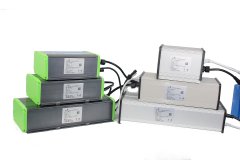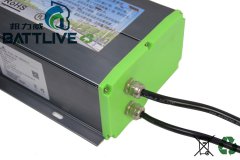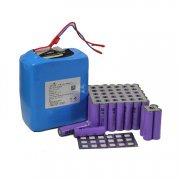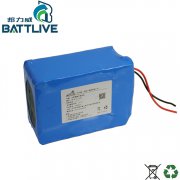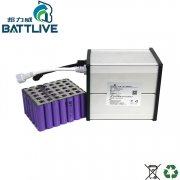With the rapid development of science and technology, the scope and function of lithium batteries have already been self-evident. However, when we use PACK lithium batteries, we often encounter various problems, which often bother us. In view of this, Xiaobian specially collates the causes of common lithium ion problems and solutions, hoping to provide convenience to you.
I. Voltage inconsistency, individual low
1. Low Voltage Caused by High Self-Discharge
Because of the large self-discharge of the core, the voltage can be reduced faster than others. The low voltage can be eliminated by checking the voltage after storage.
2. Low Voltage Caused by Uneven Charging
When the battery is charged after testing, the charge of the battery core is uneven because of the inconsistent contact resistance or the charge current of the test cabinet. There is little difference in measuring voltage in short time storage (12 hours), but there is a big difference in voltage in long time storage. This low voltage has no quality problem and can be solved by charging. After charging in production, the voltage is stored for over 24 hours.
Second, the internal resistance is too large
1. Differential testing equipment
If the detection accuracy is not enough or the contact unit can not be eliminated, the display internal resistance will be too large. The principle of AC bridge method should be used to test the internal resistance instrument detection.
2. Long storage time
The excessive storage of lithium batteries results in excessive capacity loss, internal passivation and internal resistance change, which can be solved by charging and discharging activation.
3. Abnormal heating causes large internal resistance
Core processing (spot welding, ultrasonic, etc.) makes the battery abnormally heated, resulting in thermal closure of the diaphragm and serious increase of internal resistance.
III. Expansion of Lithium Batteries
1. Expansion of lithium batteries during charging
When lithium batteries are charged, lithium batteries will naturally expand, but generally not more than 0.1 mm, but overcharging will cause electrolyte decomposition, internal pressure increase and lithium batteries expand.
2. Expansion during processing
Generally, abnormal processing (such as short circuit, overheating, etc.) results in internal overheated electrolyte decomposition and lithium battery expansion.
3. Expansion in Cycle
The thickness of the battery increases with the number of cycles, but does not increase after more than 50 cycles. Generally, the normal increase is between 0.3 mm and 0.6 mm. The aluminum shell is more serious. This phenomenon belongs to the normal battery reaction. However, if the thickness of the shell is increased or the internal material is reduced, the expansion phenomenon can be appropriately alleviated.
4. Power-off phenomenon of batteries after spot welding
After spot welding, the voltage of aluminium shell cores is less than 3.7V. Generally, the short circuit is caused by the breakdown of the inner diaphragm of the cores due to the excessive spot welding current, which causes the voltage to drop too fast.
Generally, the wrong spot welding position is caused by the wrong spot welding position. The correct spot welding position should be at the bottom or marked "A" or "A" side, and no marked side and large side can be spot welding. In addition, some spot-welded nickel strips have poor solderability, so it is necessary to use a large current spot welding, so that the internal high temperature resistant tape can not work, resulting in short circuit inside the core.
The power-off of batteries after spot welding is also partly due to the large self-discharge of batteries themselves.
V. Battery Explosion
Battery explosion generally occurs in the following situations:
1. Overcharge explosion
Out of control of protective circuit or detection cabinet causes charging voltage to be greater than 5V, which causes electrolyte decomposition, severe reaction inside the battery, rapid rise of battery internal pressure and battery explosion.
2. Overcurrent explosion
Out of control of protective circuit or detection cabinet causes too much charging current to cause lithium ion to be embedded, while lithium metal forms on the surface of the electrode, penetrates the diaphragm, and direct short circuit of positive and negative electrodes causes explosion (rarely occurs).
3. Explosion of Plastic Shell Welded by Ultrasound
When the plastic shell is welded by ultrasonic wave, the ultrasonic energy is transferred to the battery core due to equipment reasons. The large ultrasonic energy causes the inner diaphragm of the battery to melt, and the positive and negative electrodes to be short-circuited directly, resulting in explosion.
4. Explosion during spot welding
In addition, the positive and negative connectors are directly connected to the negative electrodes during spot welding, which makes the positive and negative electrodes explode after direct short circuit.
5. Over-discharge explosion
Overdischarge or over-current discharge (over 3C) of batteries can easily dissolve and deposit negative copper foil on the diaphragm, resulting in direct short circuit explosion of positive and negative electrodes (rarely occurs).
6. Explosion when vibration falls
The dislocation of the inner pole of the core caused by the violent vibration or fall of the core causes the explosion (rarely occurs) due to the direct and serious short circuit.
6. Low Battery 3.6V Platform
1. The inaccurate sampling of the test cabinet or the instability of the test cabinet result in the low test platform.
2. Low ambient temperature results in low plateau (discharge plateau is greatly affected by ambient temperature)
7. Improper processing
(1) Moving the spot welding positive connector forcefully causes bad contact between the positive and the positive of the core, which makes the internal resistance of the core larger.
(2) Spot-welded connectors are not soldered firmly and have high contact resistance, which makes the internal resistance of batteries larger.




